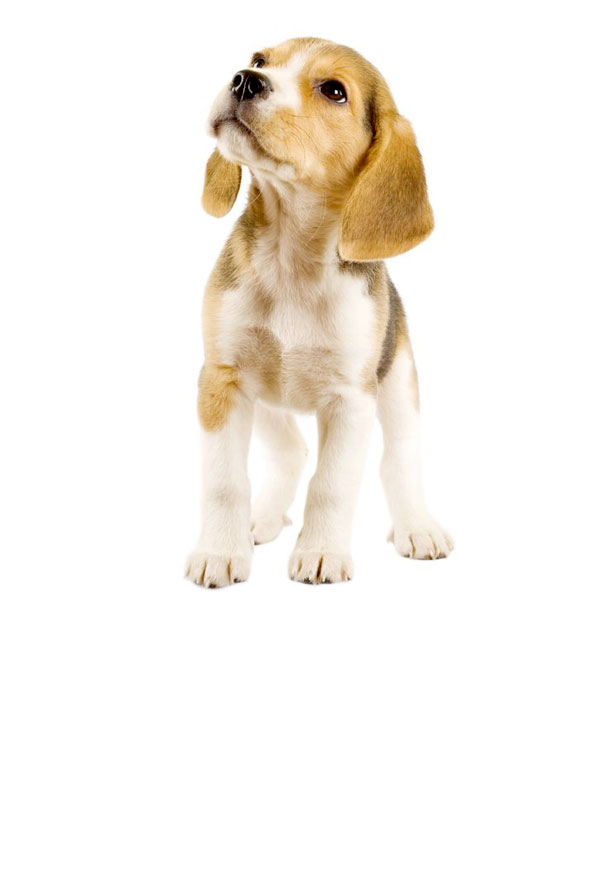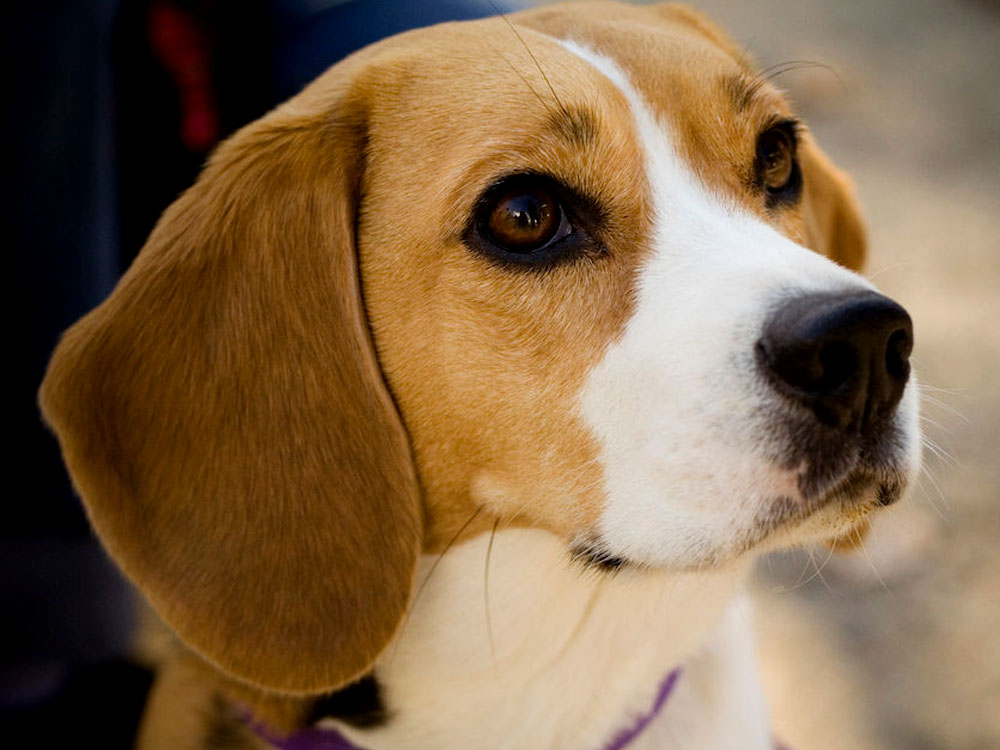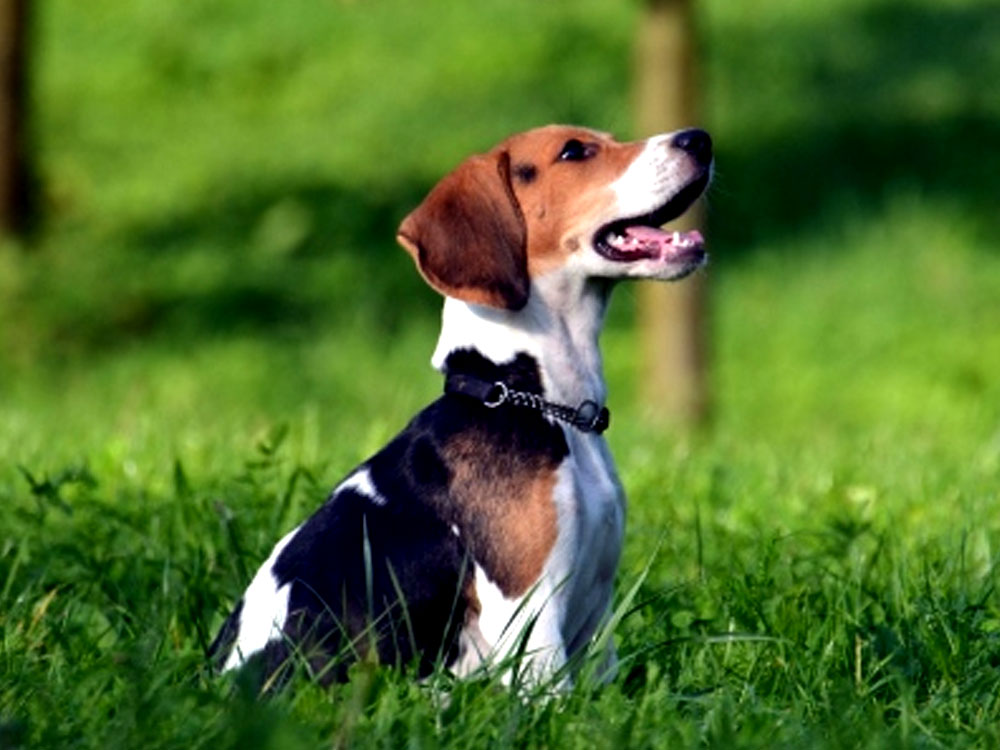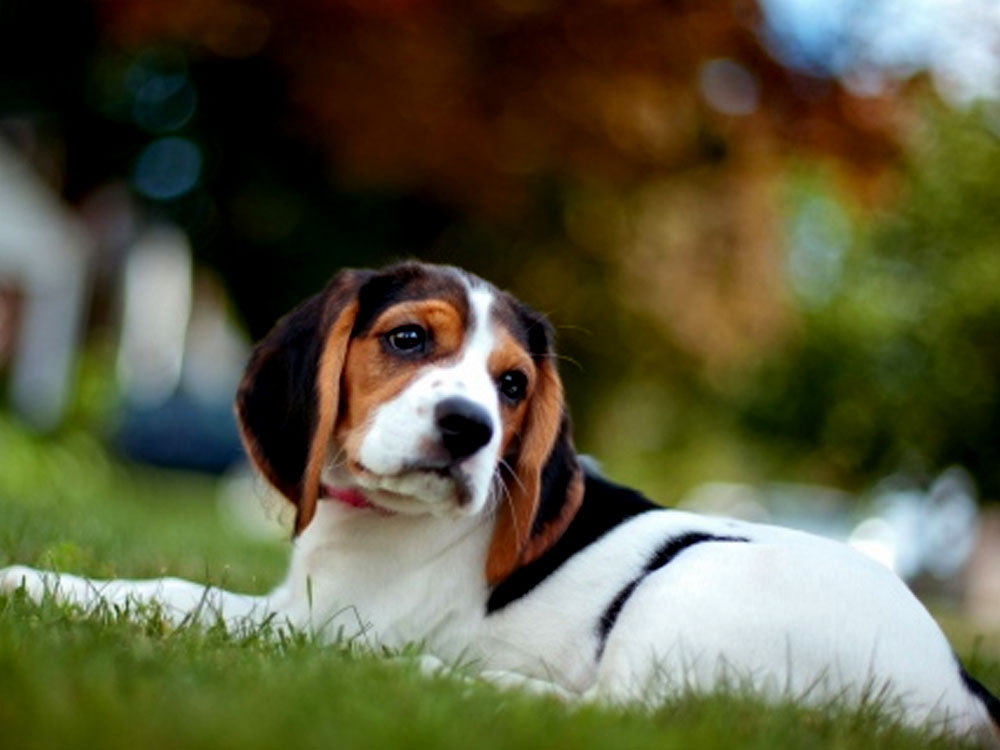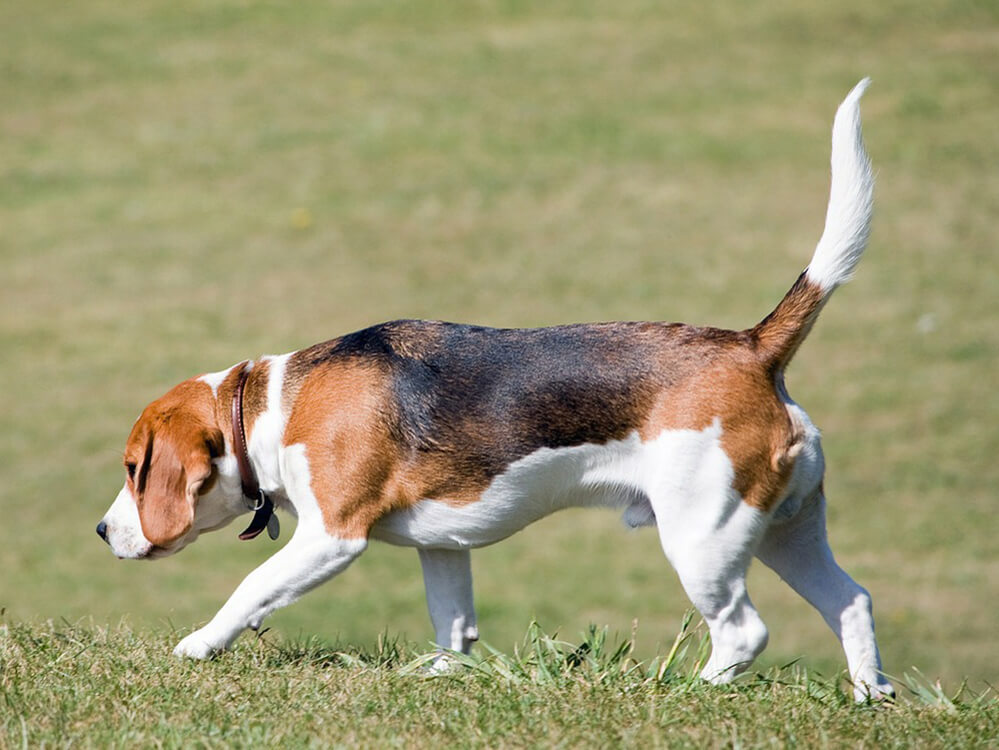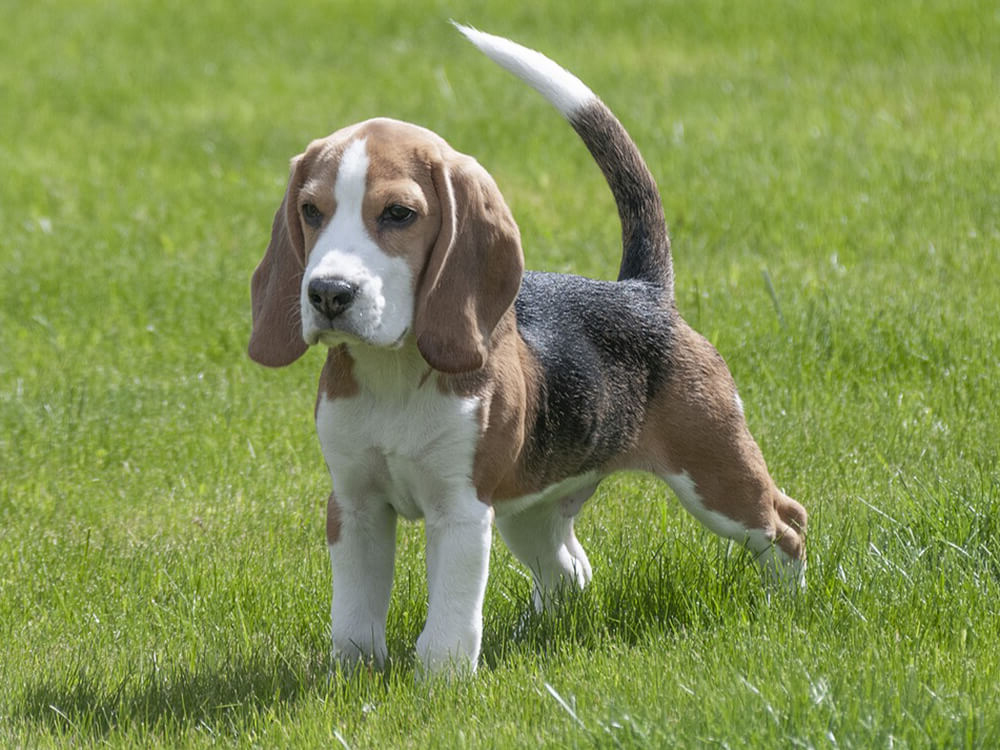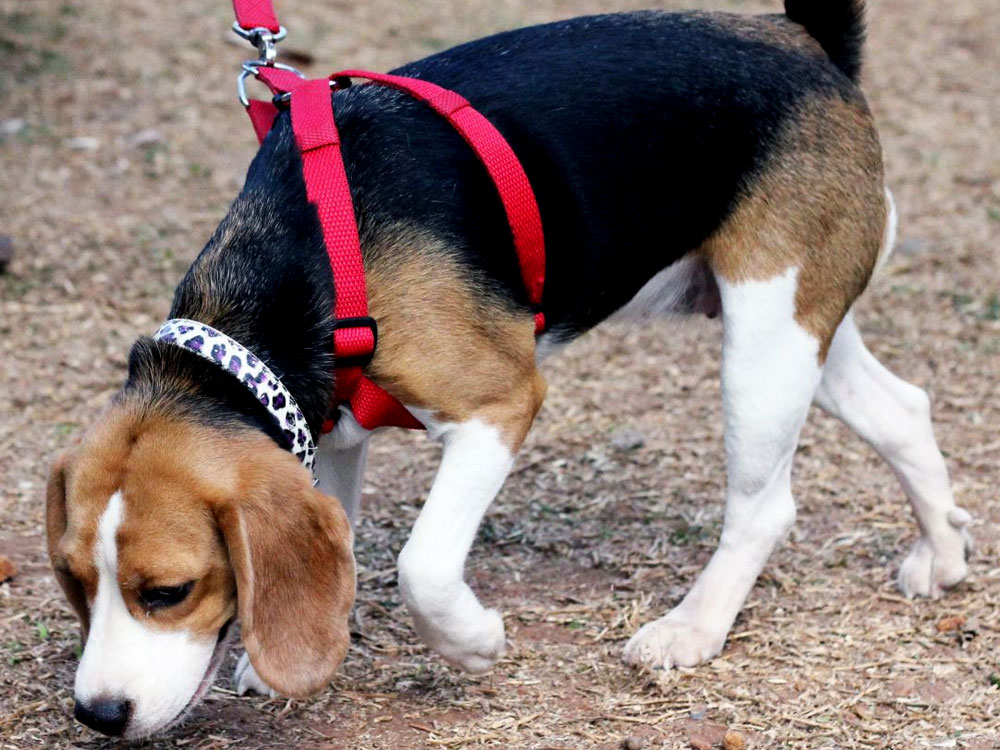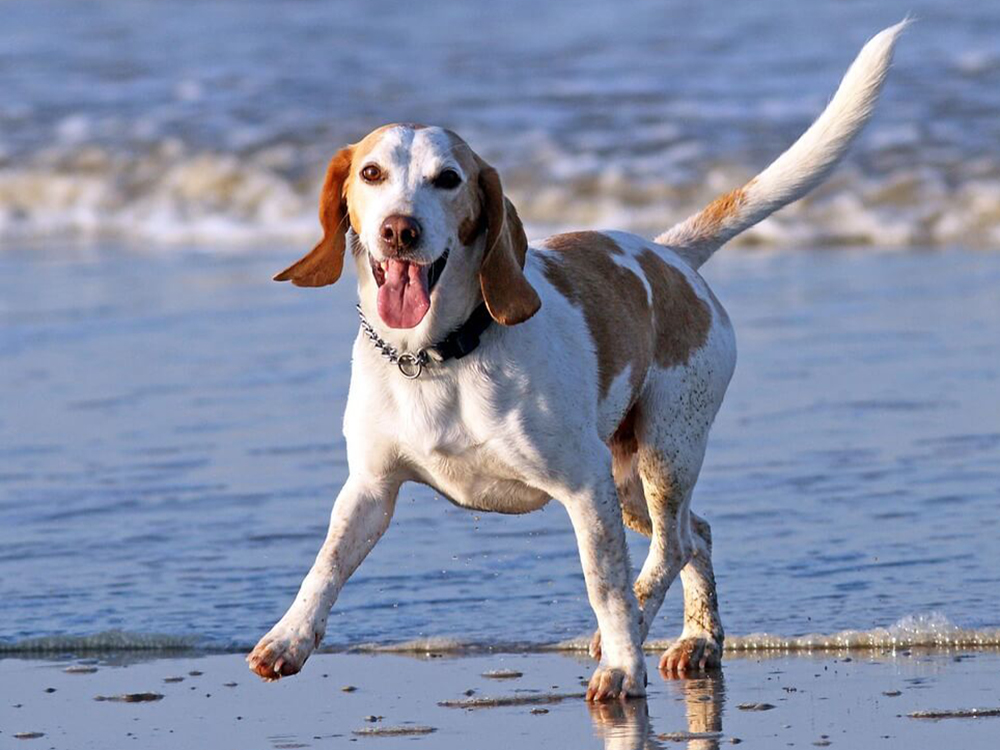
Beagle Breed Pictures
Vital Breed Stats
| Height: | 36 - 41 cm M | 33 - 38 cm F |
| Weight: | 10 - 11 kg M | 9 - 10 kg F |
| Breed Group: | Toy Dog Group |
| Life Expectancy: | 13 - 15 years |
| KC Registered: | No |
Breed Characteristics
| Size: |  |
| Grooming: |  |
| Exercise Level: |  |
| Trainability: |  |
| Barking Level: |  |
| Good with Children: |  |
| Good with other pets: |  |
| Affectionate: |  |
| Protective: |  |
| Cost to Keep: |  |
Give a thumbs up if you love the Beagle

0
More About the Breed
History
The origin of Beagle is a bit complicated since there are a lot of claims, but reliable documentation is lacking. Even the name beagle is being debated over whether it is a French or German word. Some say that there have been hunting dogs of similar appearance and size in Greece in the fifth century BCE. Others believe it came from the Talbot hound created from the documented St. Huber hound in the eleventh century. The Talbot, which was a slow hunter, was crossed with a greyhound to increase its speed.
The earliest beagles were the smallest British pack hounds established in England in the fifteenth century. Miniature ones were created and Queen Elizabeth even kept ‘pocket beagles’ in saddle panniers. The UK does not breed the miniature version anymore, but the US has kept it and currently has two varieties.
Appearance
The Beagle stands 33–41 centimetres at the withers and weighs 18–30 pounds. It resembles a miniature foxhound with broader head and shorter, square-cut muzzle. It has a domed skull and long, round-tipped ears. It has a black nose with wide nostrils and a developed sense of smell.
The Beagle is known for its distinctive tricolour coat that is short, dense, and weatherproof. It comes in a variety of colour combinations, usually in black-tan-white, blue-white-tan, hare pied, lemon pied, or badger pied.
Grooming
It is generally a clean dog, so baths can be done as needed especially when it has that ‘doggy smell.’ Brushing can be done once a week to remove dead hair. It sheds minimally at certain times of the year, especially in the spring. As a drop-eared dog, it is prone to ear infections, so it should be checked at least twice a week.
Since the coat does not require much grooming, you will have more time giving a beagle a thorough cleaning. Take care of its teeth and gums, brushing them at least twice a week. Also look out for ticks, fleas, and other abnormalities. Regular grooming appropriately done will help in the early detection of health problems. Abnormal findings during grooming must be consulted with a veterinarian so that they can prescribe proper treatments and medications.
Temperament
Intelligence
The Beagle can be a great family pet. However, since it is high-spirited, it can be ‘mouthy’ and rowdy when playing. It may grab your child’s hand for fun, so it must be trained to stop doing this. When it is left alone, it is prone to howling, digging, and destructive behaviours. It also loves escaping, so make sure that aside from being microchipped, it also needs to have a collar with your complete info.
Certain predispositions may create bias to first-time pet owners. However, it is crucial to be aware that despite its genetic make-up and predisposed temperament, the beagle is shaped based on early socialisation and training.
Nutrition
- Senior and less active: up to 520 calories daily
- Typical adult: up to 650 calories daily
- Physically active/working dog: up to 1,000 calories daily
Feeding
Health
Exercise
Cost of Ownership
The Beagle puppy will cost around £500 to £700. But before purchasing a dog or puppy, it is essential to consider the cost of raising it. One requirement to become a responsible dog owner is to be financially stable, enough to provide for your dog at the least.
In owning a beagle, there are necessary costs that you need to add to your budget other than food. Let’s start with food and dog treats. The price of food will vary depending on the size of the dog. However, this does not seem to apply for the beagle breed because they’re big eaters. Prepare to spend at least £30–£40 a month. Dog supplies or equipment such as collars, leads, beds, and toys will cost around £200 and up, provided that the beagle doesn’t destroy it as often.
You’re lucky if you come upon free veterinary consultations for a simple health check. There are tons of online pet websites offering free vet services for a basic consultation. Other than regular consultations, you also need to consider initial vaccinations (£100–£120) and annual boosters (£50–£60).
Is a Beagle Right for You?
- The Beagle is stubborn, hence it may be challenging to house-train.
- It gets bored quickly and may find digging and escaping as alternative activities.
- It barks excessively, which may not sit well with neighbours.
- The Beagle is very friendly, hence it is not an ideal guard dog.
- It has a short coat, which makes it easy to groom.
- Since is it a hyperactive breed, it may not be suitable to live in a small city apartment.
